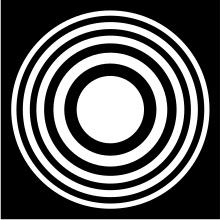
A zone plate is a device used to focus light or other things exhibiting wave character. Unlike lenses or curved mirrors however, zone plates use diffraction instead of refraction or reflection. Based on analysis by Augustin-Jean Fresnel, they are sometimes called Fresnel zone plates in his honor. The zone plate's focusing ability is an extension of the Arago spot phenomenon caused by diffraction from an opaque disc.A zone plate consists of a set of radially symmetric rings, known as Fresnel zones, which alternate between opaque and transparent. Light hitting the zone plate will diffract around...